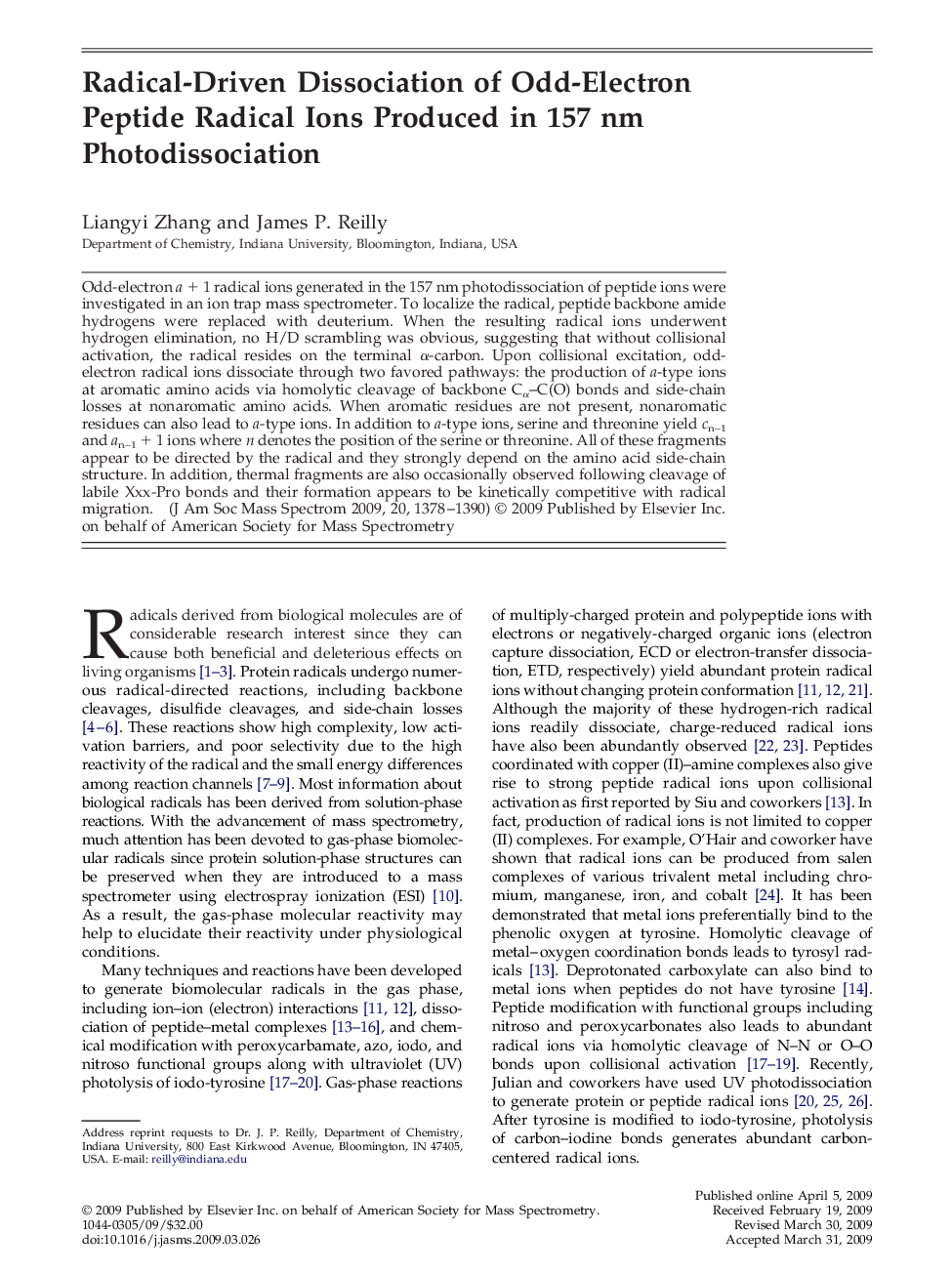| کد مقاله | کد نشریه | سال انتشار | مقاله انگلیسی | نسخه تمام متن |
|---|---|---|---|---|
| 1195256 | 964302 | 2009 | 13 صفحه PDF | دانلود رایگان |

Odd-electron a + 1 radical ions generated in the 157 nm photodissociation of peptide ions were investigated in an ion trap mass spectrometer. To localize the radical, peptide backbone amide hydrogens were replaced with deuterium. When the resulting radical ions underwent hydrogen elimination, no H/D scrambling was obvious, suggesting that without collisional activation, the radical resides on the terminal α-carbon. Upon collisional excitation, odd-electron radical ions dissociate through two favored pathways: the production of a-type ions at aromatic amino acids via homolytic cleavage of backbone Cα–C(O) bonds and side-chain losses at nonaromatic amino acids. When aromatic residues are not present, nonaromatic residues can also lead to a-type ions. In addition to a-type ions, serine and threonine yield cn–1 and an–1 + 1 ions where n denotes the position of the serine or threonine. All of these fragments appear to be directed by the radical and they strongly depend on the amino acid side-chain structure. In addition, thermal fragments are also occasionally observed following cleavage of labile Xxx-Pro bonds and their formation appears to be kinetically competitive with radical migration.
Graphical AbstractCollisional dissociation of photolytically generated peptide radical cations yields highly predictable fragments mediated by amino acid side chain thermochemistry.Figure optionsDownload high-quality image (49 K)Download as PowerPoint slide
Journal: Journal of the American Society for Mass Spectrometry - Volume 20, Issue 7, July 2009, Pages 1378–1390